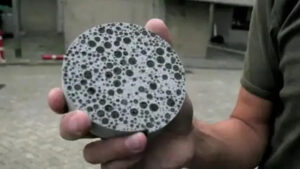Exploring Innovations in Civil Engineering Research
In the ever-evolving landscape of civil engineering, groundbreaking innovations are shaping the way we approach construction.
From self-healing bacterial concrete to the resilience of fiber-reinforced materials and advancements in soil stabilization and earthquake-resistant techniques, let’s explore the cutting-edge trends that are propelling the industry forward.
Bacterial Concrete: Paving the Way for Self-Healing Structures
The realm of construction is witnessing a paradigm shift with the introduction of bacterial concrete. Originating from the visionary mind of V. Ramakrishnan in the USA, this pioneering technique harnesses microbiologically induced calcite precipitation (MICP) to mend cracks in concrete.
The process involves infusing a bacterial solution into the conventional concrete mix, resulting in a material that exhibits remarkable self-healing properties, increased durability, and enhanced strength.
The incorporation of a liquid bacterial broth into the standard concrete mix sets the stage for transformative results. Cube samples undergo curing, and compressive strength tests, following Bureau of Indian Standards guidelines, revealing a substantial increase in strength. This is attributed to the deposition of microbial-induced calcium carbonate precipitation within the concrete structure.
Explore Civilforall to know more about the future of modern technology with civil engineering.
Bacterial Concrete in Action: A Closer Look at the Process

Delving deeper into the process, the introduction of a bacterial solution, often in the form of a liquid broth, marks a departure from traditional concrete composition. The bacterial solution interacts with the cementitious materials, initiating microbiologically induced calcite precipitation (MICP).
This chemical reaction results in the formation of calcite, a crystalline form of calcium carbonate, within the concrete structure.
As cube samples undergo the curing process, the microbial activity continues to flourish, leading to the development of a self-healing mechanism. The microbial-induced calcium carbonate precipitation not only closes existing cracks but also enhances the overall strength of the concrete.
This transformative approach is not just about fixing flaws; it’s about creating a construction material that adapts and reinforces itself over time.
Fiber Reinforced Concrete (Glass): Strengthening Foundations with Innovation
A notable evolution in the construction landscape is the integration of glass fibers into fiber-reinforced concrete (FRC). Renowned for their high tensile strength, these fibers are revolutionizing construction materials. The advent of alkali-resistant glass fibers, known as “CEM-FIL,” has further elevated the durability of fiber-reinforced concrete.
Typical FRC proportions, encompassing cement content, water-cement ratio, percentage of sand to total aggregate, maximum aggregate size, air content, and fiber content, have found a new dimension with the introduction of alkali-resistant glass fibers. Applications range from building facades to permanent and temporary formwork, showcasing the versatility and strength of this innovative material.
Unveiling the Potential of Alkali-Resistant Glass Fibers
The introduction of alkali-resistant glass fibers, represented by the trade name “CEM-FIL,” addresses a longstanding challenge in fiber-reinforced concrete. Traditionally, the use of glass fibers alongside cement was hindered by the alkaline conditions of cement, impacting the fibers’ integrity. However, with the development of alkali-resistant glass fibers, this limitation is effectively overcome.
The alkali-resistant nature of these fibers ensures that they remain structurally sound even in the alkaline environment of cement. This breakthrough has significantly expanded the application of fiber-reinforced concrete in various construction scenarios. Whether it’s the creation of intricate building facades or the establishment of robust formwork, alkali-resistant glass fibers are proving to be a game-changer in the quest for durable and resilient construction materials.
Current Developments in FRC: Pushing the Boundaries of Strength and Flexibility
As the demand for stronger and more flexible construction materials grows, researchers and engineers are pushing the boundaries of fiber-reinforced concrete. The latest developments in FRC aim to enhance not only the strength but also the versatility of this innovative material. Let’s explore some of the current advancements that are shaping the future of fiber-reinforced concrete.
1. High Fiber Volume Micro-Fiber Systems
In the pursuit of maximizing the benefits of fibers in concrete, high fiber volume micro-fiber systems have emerged as a promising avenue. This approach involves increasing the volume of fibers within the concrete mix, creating a densely reinforced matrix. The result is a material with enhanced tensile and flexural strength, making it ideal for applications where structural integrity is paramount.
2. Slurry Infiltrated Fiber Concrete (SIFCON)
Slurry infiltrated fiber concrete (SIFCON) represents a leap forward in the quest for high-performance concrete. In this innovative approach, a slurry consisting of cement, fine particles, and fibers is infiltrated into the concrete mix. The dense packing of fibers within the matrix contributes to improved ductility and toughness, addressing some of the traditional limitations of conventional concrete. SIFCON is gaining traction in applications where superior mechanical properties are essential, such as bridge construction and earthquake-resistant structures.
3. Compact Reinforced Composites
Compact reinforced composites focus on achieving optimal reinforcement with minimal material usage. This approach aims to create a highly efficient and sustainable construction material by strategically placing fibers in critical zones. By reducing the overall volume of fibers while maintaining targeted reinforcement, compact reinforced composites offer a balanced solution that meets both structural and economic considerations.
These current developments in fiber-reinforced concrete underscore the industry’s commitment to continuous improvement. As construction demands evolve and diversify, the versatility and adaptability of FRC position it as a cornerstone in the development of resilient and sustainable infrastructure.
Soil Stabilization in Road Construction: Bitumen’s Bond with Earth
Navigating the challenges of road construction, soil stabilization emerges as a crucial technique. This method involves blending bituminous materials with soil to enhance its properties, especially when the natural strength of the soil proves inadequate for construction. Bitumen mixtures act as mechanical reinforcements, filling the soil’s pores without engaging in chemical reactions with the soil itself.
Soil stabilization falls into two categories: mechanical stabilization, involving physical alterations to soil particles, and chemical stabilization, relying on chemical reactions between stabilizers and soil minerals. The choice of stabilizing agents, such as cement, lime, fly ash, or bitumen, depends on achieving the desired geotechnical properties of the soil.
In Practice: Tailoring Stabilization Techniques to Soil Types
Effective soil stabilization is a nuanced process that requires a thorough understanding of the specific characteristics of the soil in question. Different soil types demand tailored approaches to achieve optimal results. Let’s explore how soil stabilization techniques are applied to address the unique challenges posed by various soil types.
In Practice: Tailoring Stabilization Techniques to Soil Types
Effective soil stabilization is a nuanced process that requires a thorough understanding of the specific characteristics of the soil in question. Different soil types demand tailored approaches to achieve optimal results. Let’s explore how soil stabilization techniques are applied to address the unique challenges posed by various soil types.
1. Clay Soils: Mitigating Swelling and Shrinkage
Clay soils, known for their high plasticity and sensitivity to moisture changes, often present challenges in construction. Stabilization techniques for clay soils focus on mitigating swelling and shrinkage tendencies, improving overall stability. The addition of lime or cement helps create stable soil aggregates, reducing the soil’s susceptibility to volume changes. This is particularly crucial in areas where expansive clay soils are prevalent, as it prevents undesirable ground movements that can compromise the integrity of structures.
2. Silty Soils: Enhancing Structural Integrity
Silts, with their fine particle size, present unique challenges during stabilization. The goal is to enhance the structural integrity of silty soils by improving their load-bearing capacity and reducing susceptibility to erosion. Stabilizing agents such as cement are employed to bind the silty particles, creating a more cohesive and resilient soil matrix. This approach is instrumental in stabilizing silty soils for road construction, where the soil must withstand the stresses imposed by vehicular traffic.
3. Peat and Organic Soils: Managing High Water Content
Peat and organic soils, characterized by their high water content, porosity, and organic content, require specialized stabilization techniques. The focus is on managing water content and increasing the soil’s strength to create a stable foundation for construction. Lime stabilization proves effective in reducing the compressibility of peat soils, while also enhancing their shear strength. By minimizing the impact of high water content, lime stabilization ensures that organic soils can provide a reliable base for infrastructure development.
Conclusion
In conclusion, the innovations in civil engineering showcased in self-healing bacterial concrete, advanced fiber-reinforced materials, soil stabilization techniques, and earthquake-resistant technologies underscore a transformative era in construction. These advancements not only enhance structural integrity but also emphasize adaptability, sustainability, and safety. The industry’s commitment to continuous improvement is evident in the exploration of bio-stabilization, geosynthetics, nanotechnology, and the ongoing research into shape memory alloys and smart materials. As the field evolves, the collaborative efforts of researchers and engineers are shaping a future where construction is not just about erecting buildings but creating resilient, eco-friendly, and technologically advanced structures for a sustainable built environment.



6 Responses
I absolutely loved this article! The insights you’ve provided is highly useful for anyone working in the construction sector today.
With the field always advancing, it’s great to see such practical insights
that can help workers remain competitive. I’ll definitely be sharing this
on my website about home construction because I know my followers will
find it just as useful. Thanks for putting this together!